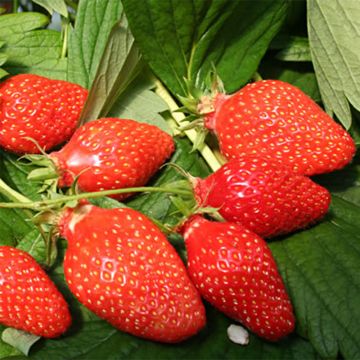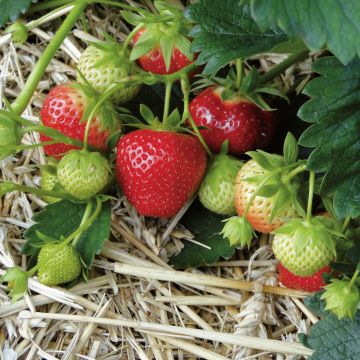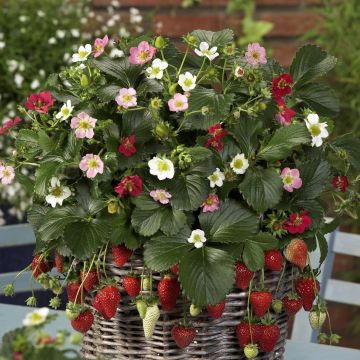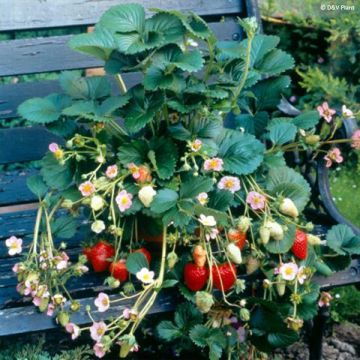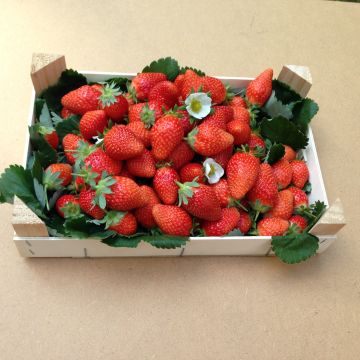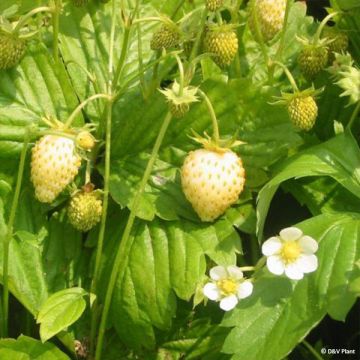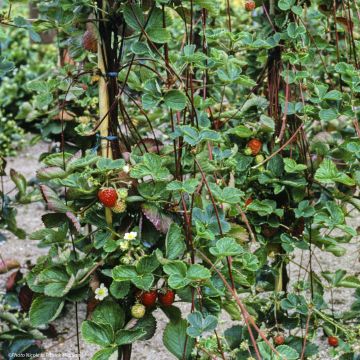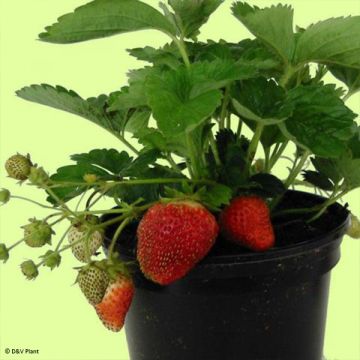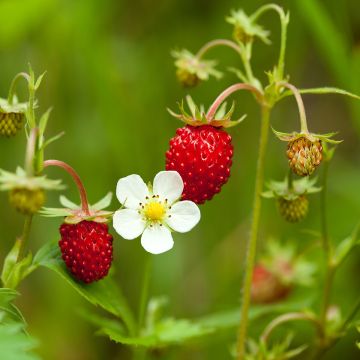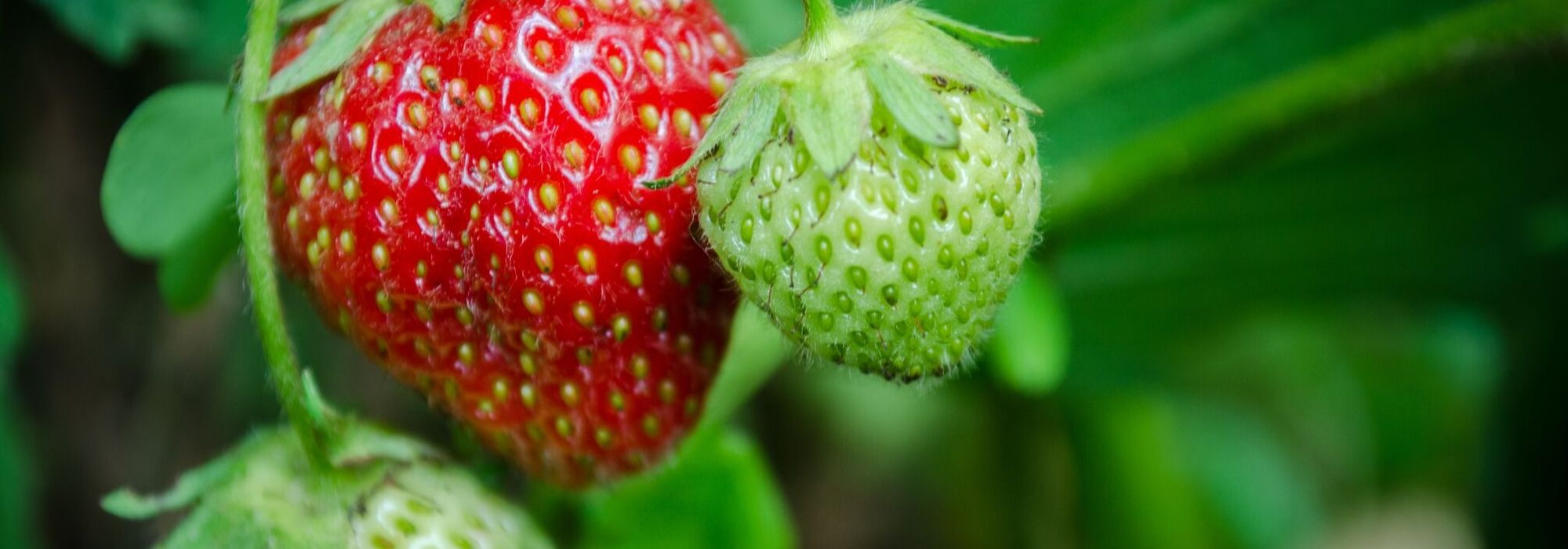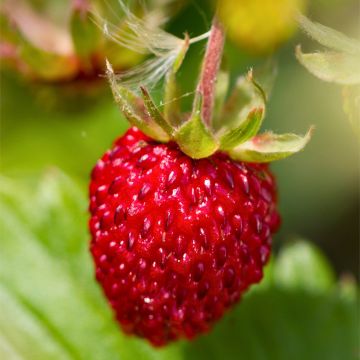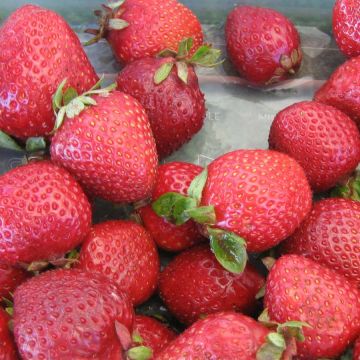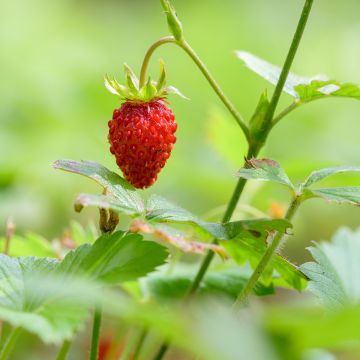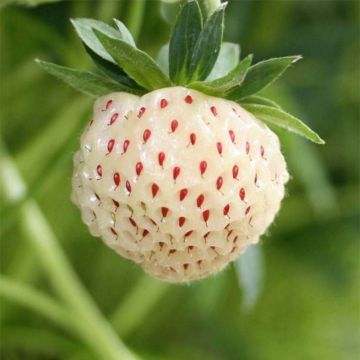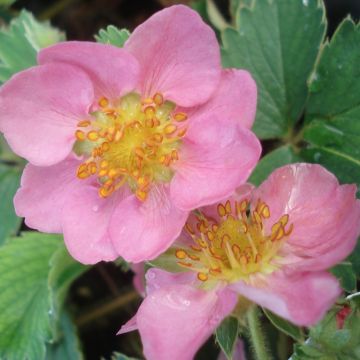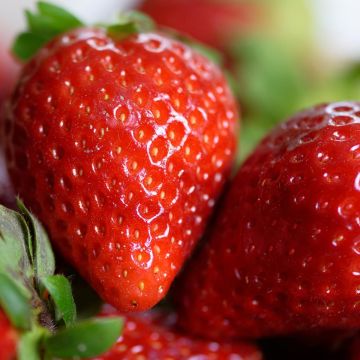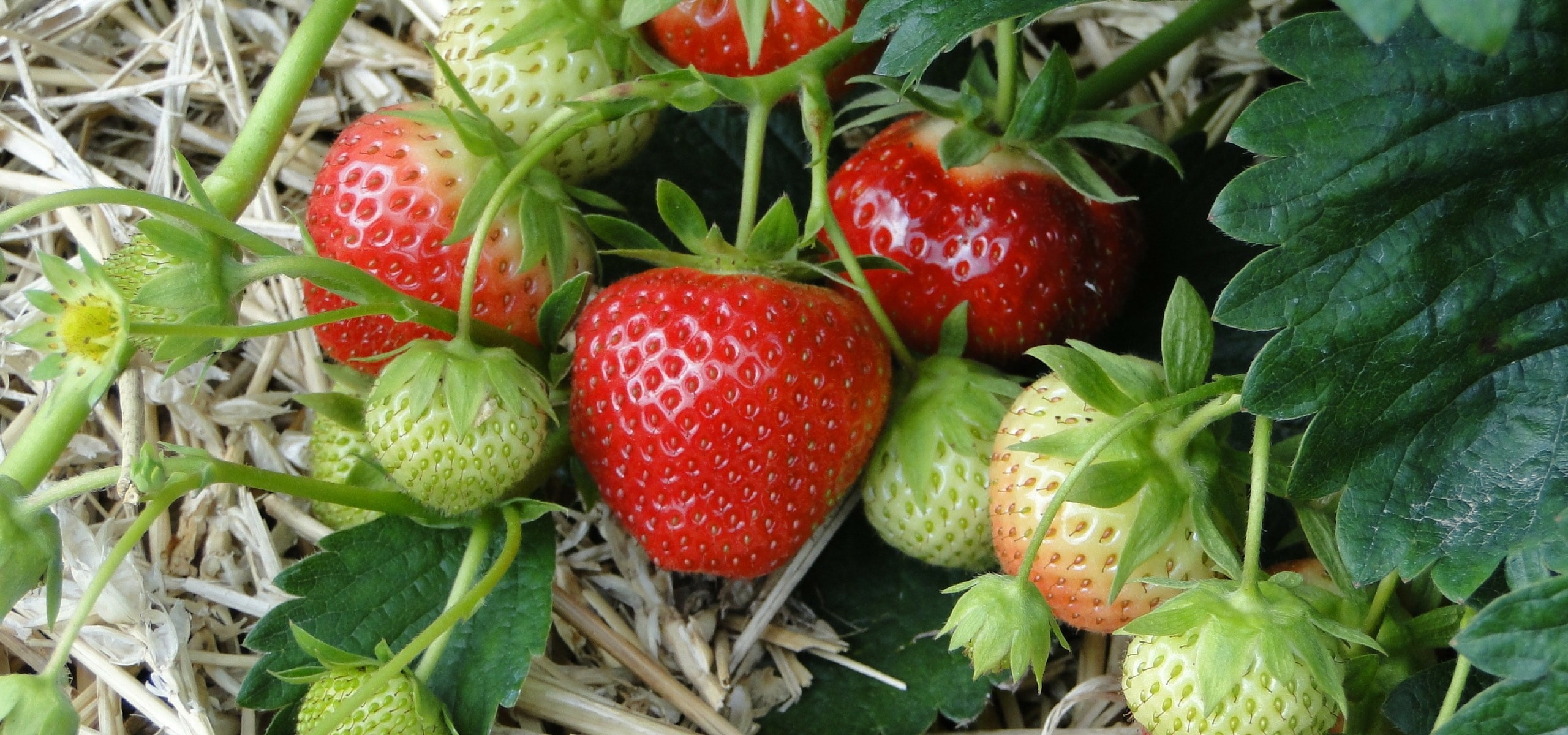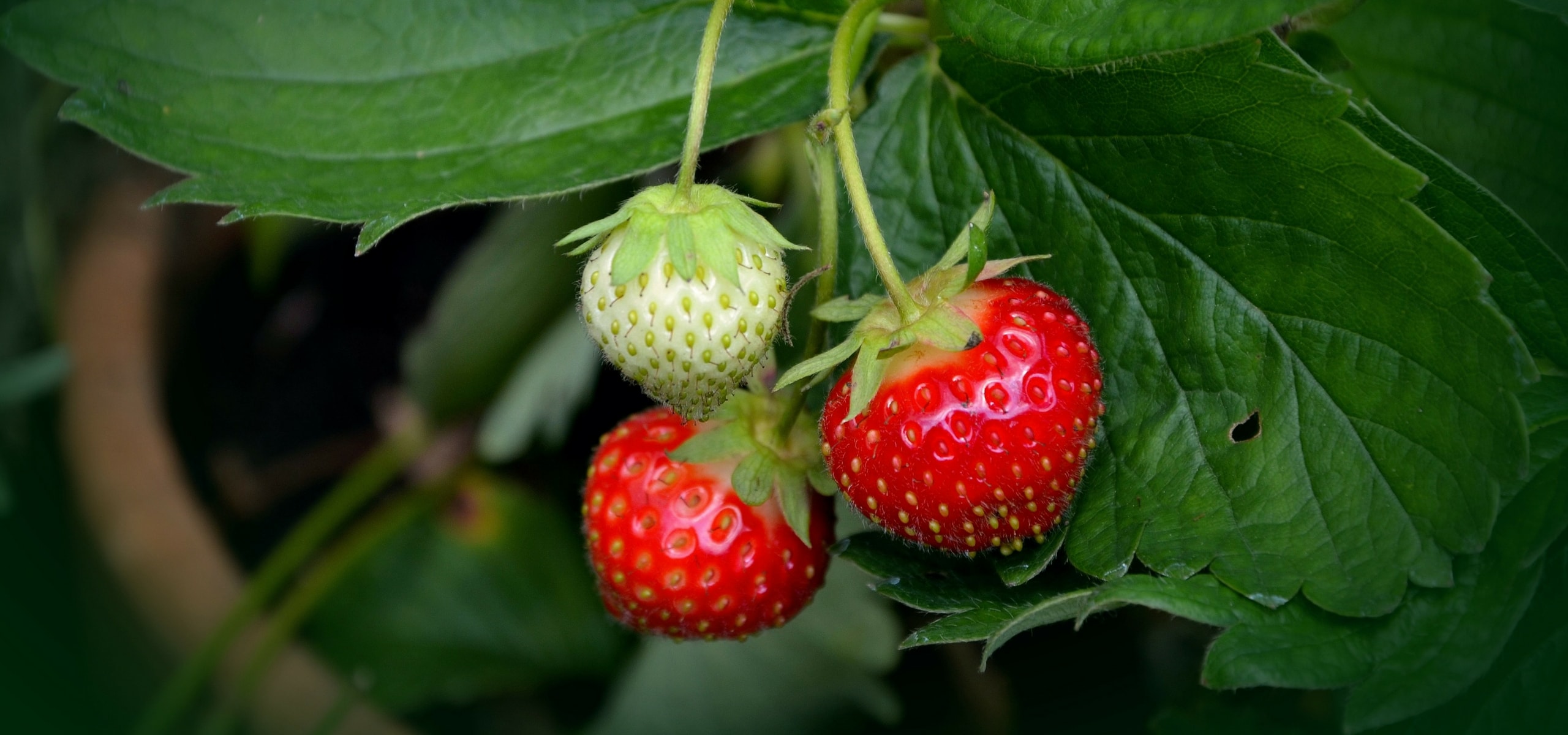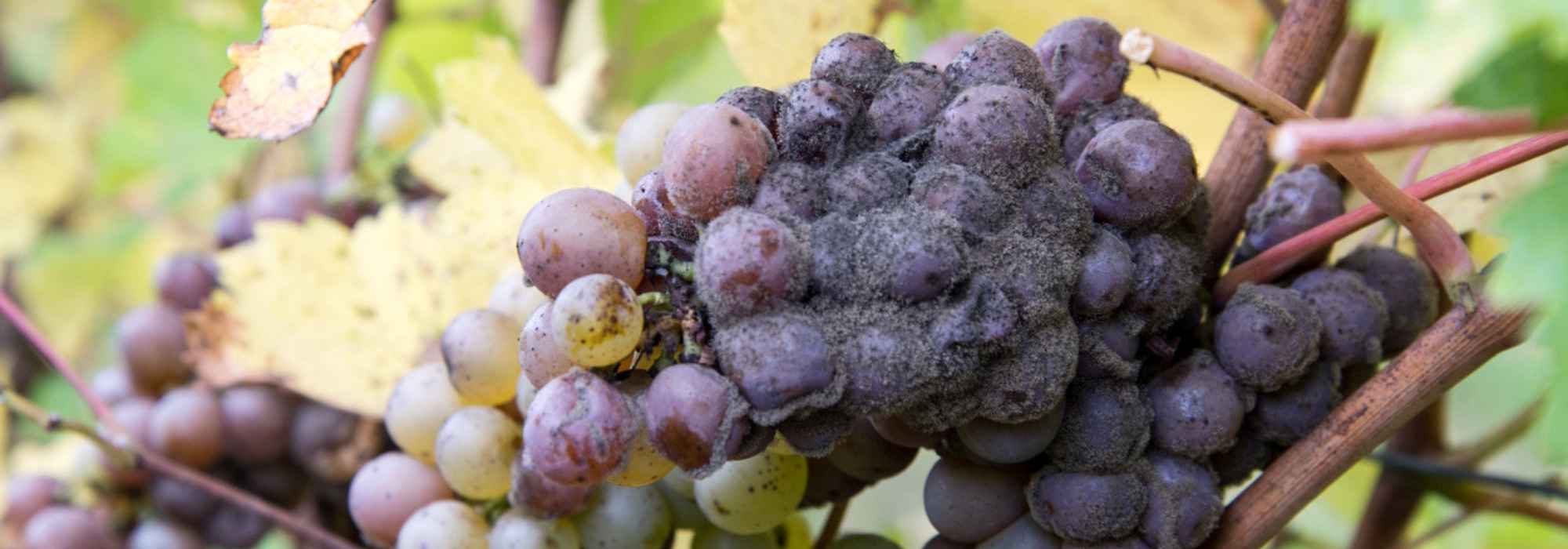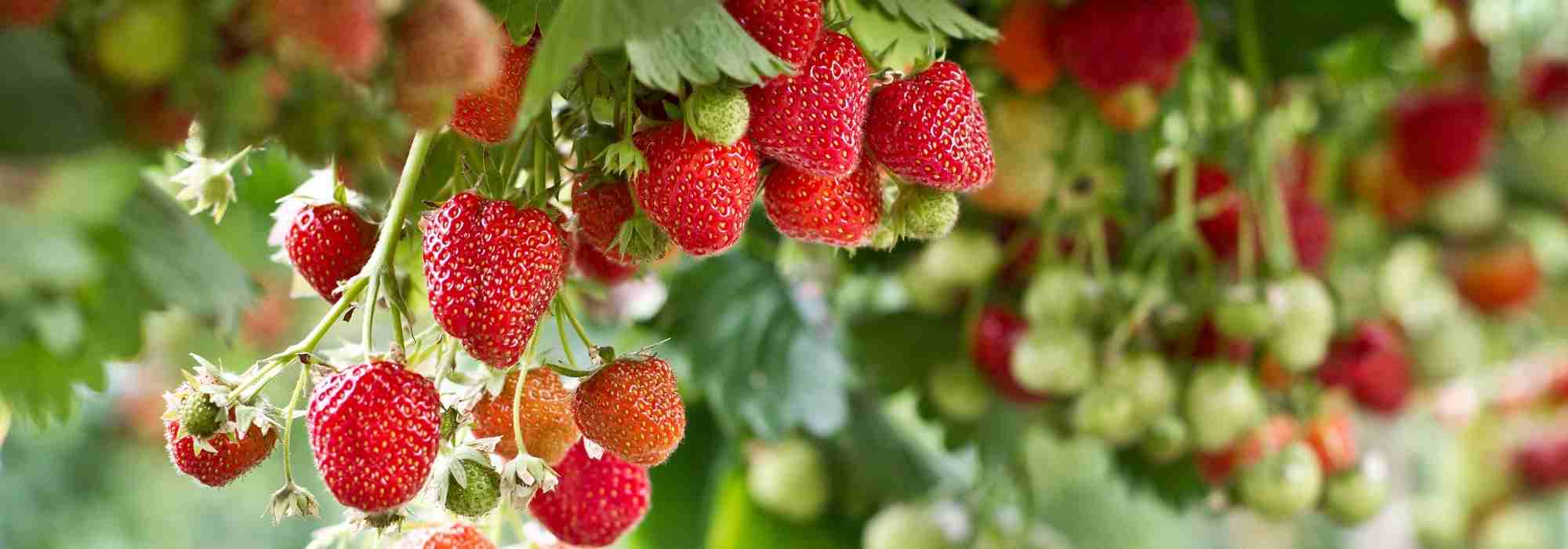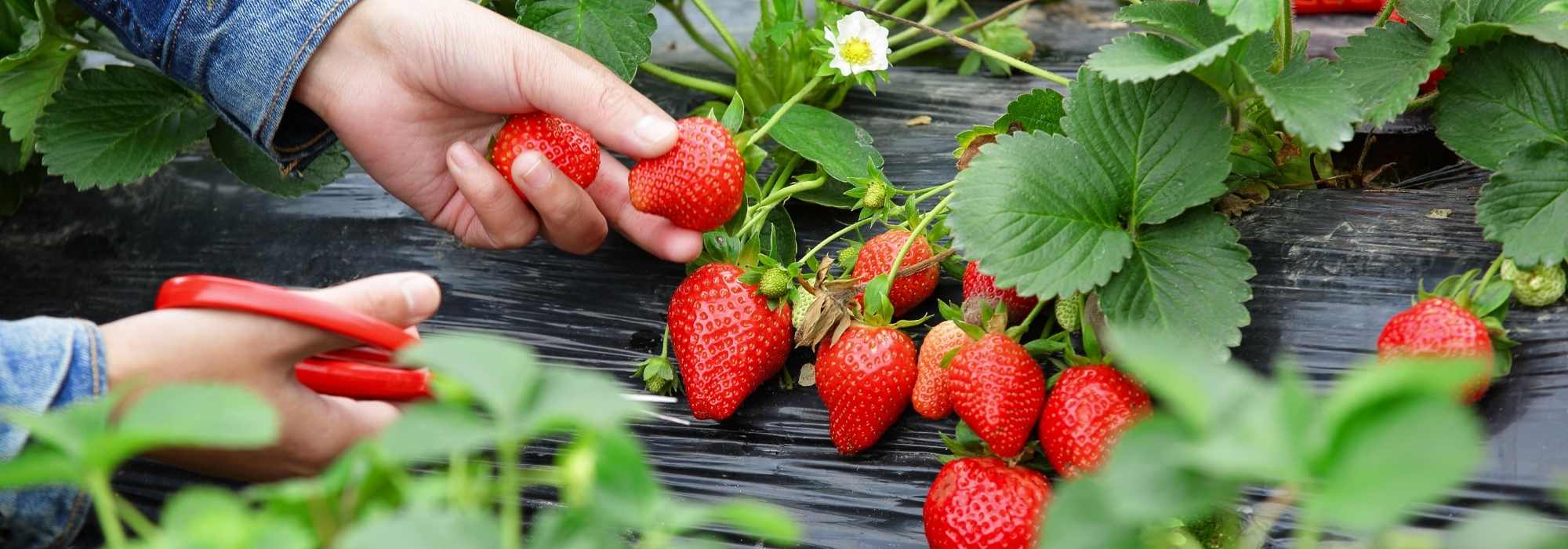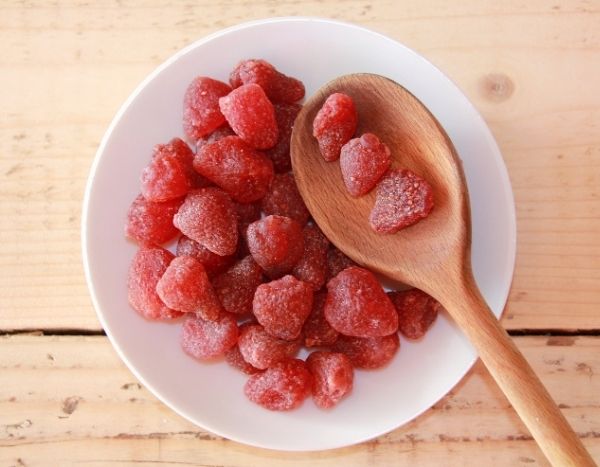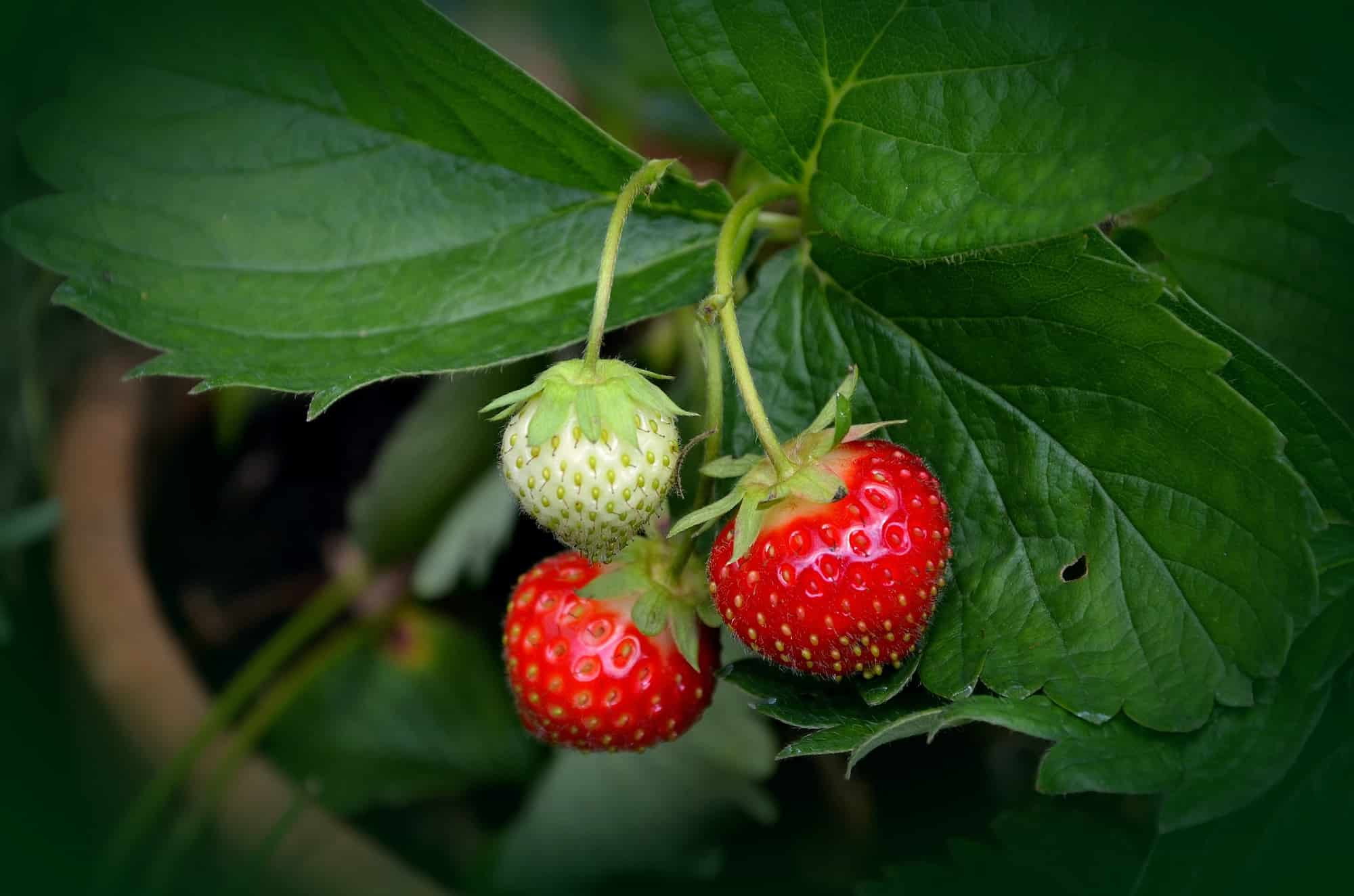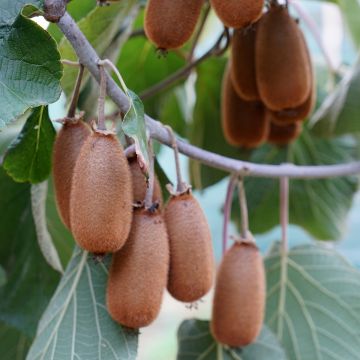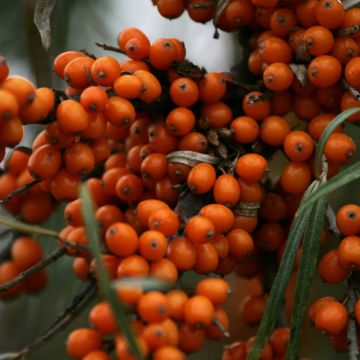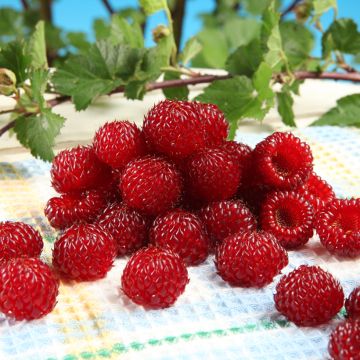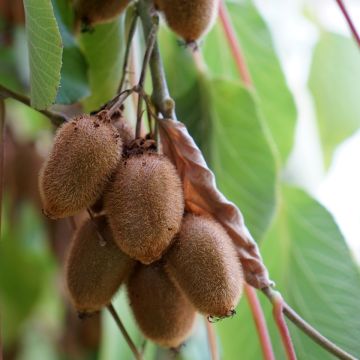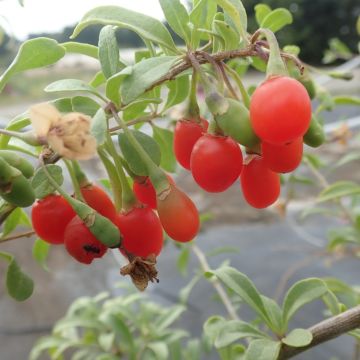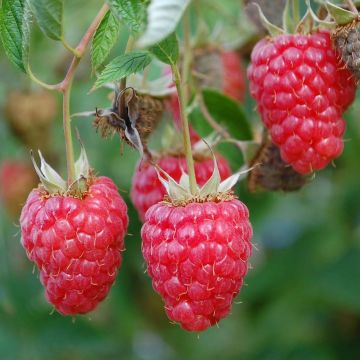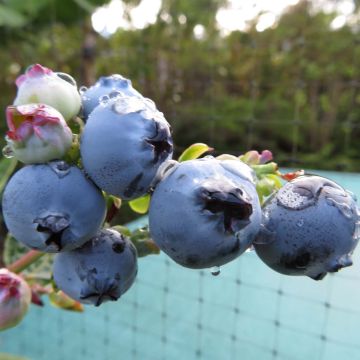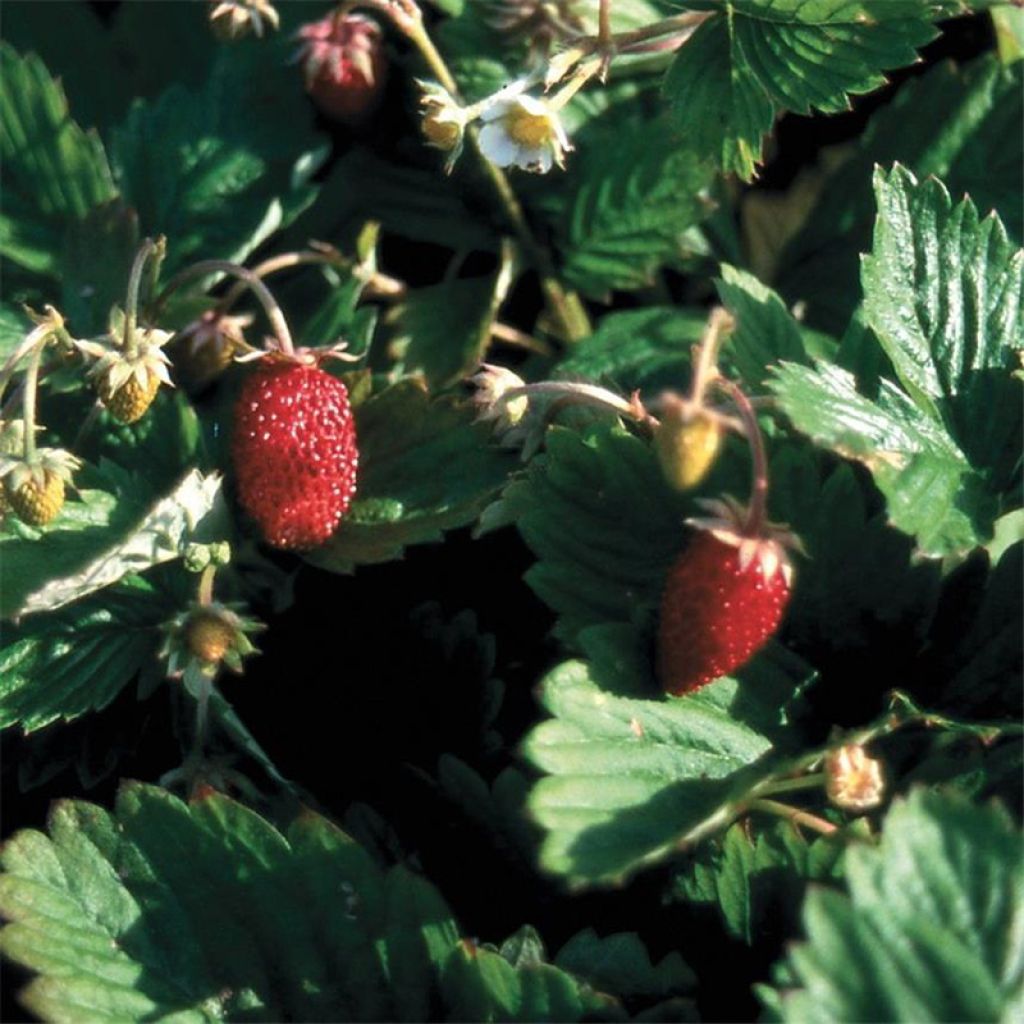

Fraisier des Quatre Saisons NT - Ferme de Sainte Marthe


Fraisier des Quatre Saisons NT - Ferme de Sainte Marthe
Fragaria vesca - Ferme de Sainte Marthe Seeds
Fragaria vesca
Wild Strawberry, Woodland Strawberry, Alpine Strawberry, European Strawberry
Special offer!
Receive a €20 voucher for any order over €90 (excluding delivery costs, credit notes, and plastic-free options)!
1- Add your favorite plants to your cart.
2- Once you have reached €90, confirm your order (you can even choose the delivery date!).
3- As soon as your order is shipped, you will receive an email containing your voucher code, valid for 3 months (90 days).
Your voucher is unique and can only be used once, for any order with a minimum value of €20, excluding delivery costs.
Can be combined with other current offers, non-divisible and non-refundable.
Why not try an alternative variety in stock?
View all →This plant carries a 6 months recovery warranty
More information
We guarantee the quality of our plants for a full growing cycle, and will replace at our expense any plant that fails to recover under normal climatic and planting conditions.
Description
The Four Seasons Strawberry is a variety of Wild Strawberry that has retained its flavour but produces larger fruits, ranging from 3 to 5cm (1 to 2in). It is a perpetual variety, with strawberries that can be harvested throughout the summer, until the first frost. Sowing is done from February to May for a first harvest one year later.
The Four Seasons Strawberry is ideal for making pies, as it combines subtle flavours and abundant round fruits. Sow from February to May and harvest throughout the summer, until the first frost. This variety has many qualities and, if sown early enough, can bear fruit in the first year.
The strawberry is a perennial plant belonging to the Rosaceae family. Known in Europe for a long time, it naturally grows in all the undergrowth of temperate regions. However, most of the juicy strawberries cultivated in our gardens are hybrids derived from a species native to Chile and brought back by the navigator Amédé François Frézier. There are indeed several species of strawberries, the main ones being: Fragaria vesca or Wild Strawberry, known for its small particularly fragrant fruits; Fragaria moschata or Musk Strawberry; Fragaria viridis or Green Strawberry - also known as Valley Strawberry - less interesting due to the acidity of its fruits; and finally, Fragaria chiloensis or Chilean Strawberry. These are wild strawberries. Most large-fruited cultivated strawberries come from Fragaria x Ananassa species, resulting from a cross between Fragaria chiloensis and Fragaria virginiana, another American species.
The strawberry has a spreading habit that can reach 40cm (16in) in width and height. The evergreen leaves are trifoliate, obovate, finely toothed, and form dark green rosettes. Its flowering is characterized by a multitude of small white, yellow, or pink flowers with a golden centre. Then, depending on the varieties, they produce mostly red fruits, but recent cultivars offer pink, yellow, or white strawberries. Botanically speaking, strawberries are considered pseudocarps, with the achenes (seeds) appearing on the surface under the skin.
The flavour of the strawberry is very delicate and characterized by a sweet and fruity aroma, with sometimes a slight acidic note in the background. Non-remontant varieties flower only once a year in spring, while remontant varieties flower twice a year or continuously from spring to autumn. Strawberries are rich in vitamins B8 and B9, very rich in vitamins C and E, and contain provitamin A. They have remineralizing, hypotensive, and purifying properties. It should be noted that they can cause itching for some people as they stimulate the release of histamine in the body.
Harvesting: pick the fruits as they ripen on the plants. Strawberries are delicate, so pick them with their stalk by pinching the stem 1 to 2cm (0 to 1in) above it. The texture of the fruit is a good indicator of its ripeness. It should be firm and slightly soft to the touch.
Storage: strawberries are best consumed fresh, either plain, with cream, or as a pie filling. They can be stored for about a week in the vegetable drawer of your refrigerator. When they have been bumped or scratched, they will not keep as long. If you have a large harvest, keep in mind that strawberries are fragile fruits. For longer storage, consider using sugar, the best friend of fruits. You can naturally make jams, marmalades, compotes, or syrups. It is also possible to make ice cream or sorbets, but they will not keep as long. You can also dry them in the oven after slicing them into thin slices of at least 1mm, which can be added to your muesli. Finally, strawberries freeze very well. There are now small trays available for freezing small fruits such as strawberries, raspberries, or currants, etc.
Gardener's tip: strawberry plants are good companions for garlic, beans, lettuce, onions, leeks, thyme, and spinach. However, they do not appreciate the company of cabbage and other brassicas.
Untreated or "NT" seeds come from conventionally cultivated plants (often using phytosanitary products), but they do not undergo any treatment after harvest. These seeds are allowed in organic market gardening when organic seeds are out of stock.
Harvest
Plant habit
Foliage
Botanical data
Fragaria
vesca
Rosaceae
Wild Strawberry, Woodland Strawberry, Alpine Strawberry, European Strawberry
Western Europe
Perennial
Other Strawberry plants
View all →Planting and care
The strawberry plant is admirable for its hardiness and ease of cultivation. It thrives in all types of soil, adapts to partial shade but prefers full sun while tolerating short periods of drought. As it readily multiplies through stolons, be careful not to let it spread too much.
Before starting the sowing, you can place your seeds in the freezer compartment of your refrigerator for a few days, then in the vegetable drawer. Indeed, this will facilitate germination after a period that can be compared to winter and the gradual warming of spring.
Greenhouse sowing: sow from February to May in a warm environment (16 to 18°C (60.8 to 64.4°F)) in a tray with one-third "special sowing" potting soil, one-third garden soil, and one-third sand. Cover with a thin layer of potting soil, about 1 to 2mm (0in) thick, then lightly tamp down. Water and make sure to keep the substrate moist. Strawberry plants take a while to emerge. Patience is required because after about 35 days, the first seedlings will appear. When the plants have 5 to 6 leaves, transplant them into buckets where they will continue to grow comfortably until they can be planted in the ground.
Planting in the ground: once the risk of frost has passed, usually after the "Ice Saints" in mid-May, and when your plants have several leaves, transplant them into the ground. Dig a hole in the soil. If you want to plant multiple plants, space them 35cm (14in) apart in all directions. Depending on the variety, it may take some time before the first fruits appear.
Maintenance: regularly weed. It is beneficial to mulch your strawberry plants to maintain moisture and prevent the fruits from touching the ground, thus protecting them from grey rot.
Seedlings
Care
Intended location
Planting & care advice
This item has not been reviewed yet - be the first to leave a review about it.
Similar products
Haven't found what you were looking for?
Hardiness is the lowest winter temperature a plant can endure without suffering serious damage or even dying. However, hardiness is affected by location (a sheltered area, such as a patio), protection (winter cover) and soil type (hardiness is improved by well-drained soil).

Photo Sharing Terms & Conditions
In order to encourage gardeners to interact and share their experiences, Promesse de fleurs offers various media enabling content to be uploaded onto its Site - in particular via the ‘Photo sharing’ module.
The User agrees to refrain from:
- Posting any content that is illegal, prejudicial, insulting, racist, inciteful to hatred, revisionist, contrary to public decency, that infringes on privacy or on the privacy rights of third parties, in particular the publicity rights of persons and goods, intellectual property rights, or the right to privacy.
- Submitting content on behalf of a third party;
- Impersonate the identity of a third party and/or publish any personal information about a third party;
In general, the User undertakes to refrain from any unethical behaviour.
All Content (in particular text, comments, files, images, photos, videos, creative works, etc.), which may be subject to property or intellectual property rights, image or other private rights, shall remain the property of the User, subject to the limited rights granted by the terms of the licence granted by Promesse de fleurs as stated below. Users are at liberty to publish or not to publish such Content on the Site, notably via the ‘Photo Sharing’ facility, and accept that this Content shall be made public and freely accessible, notably on the Internet.
Users further acknowledge, undertake to have ,and guarantee that they hold all necessary rights and permissions to publish such material on the Site, in particular with regard to the legislation in force pertaining to any privacy, property, intellectual property, image, or contractual rights, or rights of any other nature. By publishing such Content on the Site, Users acknowledge accepting full liability as publishers of the Content within the meaning of the law, and grant Promesse de fleurs, free of charge, an inclusive, worldwide licence for the said Content for the entire duration of its publication, including all reproduction, representation, up/downloading, displaying, performing, transmission, and storage rights.
Users also grant permission for their name to be linked to the Content and accept that this link may not always be made available.
By engaging in posting material, Users consent to their Content becoming automatically accessible on the Internet, in particular on other sites and/or blogs and/or web pages of the Promesse de fleurs site, including in particular social pages and the Promesse de fleurs catalogue.
Users may secure the removal of entrusted content free of charge by issuing a simple request via our contact form.
The flowering period indicated on our website applies to countries and regions located in USDA zone 8 (France, the United Kingdom, Ireland, the Netherlands, etc.)
It will vary according to where you live:
- In zones 9 to 10 (Italy, Spain, Greece, etc.), flowering will occur about 2 to 4 weeks earlier.
- In zones 6 to 7 (Germany, Poland, Slovenia, and lower mountainous regions), flowering will be delayed by 2 to 3 weeks.
- In zone 5 (Central Europe, Scandinavia), blooming will be delayed by 3 to 5 weeks.
In temperate climates, pruning of spring-flowering shrubs (forsythia, spireas, etc.) should be done just after flowering.
Pruning of summer-flowering shrubs (Indian Lilac, Perovskia, etc.) can be done in winter or spring.
In cold regions as well as with frost-sensitive plants, avoid pruning too early when severe frosts may still occur.
The planting period indicated on our website applies to countries and regions located in USDA zone 8 (France, United Kingdom, Ireland, Netherlands).
It will vary according to where you live:
- In Mediterranean zones (Marseille, Madrid, Milan, etc.), autumn and winter are the best planting periods.
- In continental zones (Strasbourg, Munich, Vienna, etc.), delay planting by 2 to 3 weeks in spring and bring it forward by 2 to 4 weeks in autumn.
- In mountainous regions (the Alps, Pyrenees, Carpathians, etc.), it is best to plant in late spring (May-June) or late summer (August-September).
The harvesting period indicated on our website applies to countries and regions in USDA zone 8 (France, England, Ireland, the Netherlands).
In colder areas (Scandinavia, Poland, Austria...) fruit and vegetable harvests are likely to be delayed by 3-4 weeks.
In warmer areas (Italy, Spain, Greece, etc.), harvesting will probably take place earlier, depending on weather conditions.
The sowing periods indicated on our website apply to countries and regions within USDA Zone 8 (France, UK, Ireland, Netherlands).
In colder areas (Scandinavia, Poland, Austria...), delay any outdoor sowing by 3-4 weeks, or sow under glass.
In warmer climes (Italy, Spain, Greece, etc.), bring outdoor sowing forward by a few weeks.






























